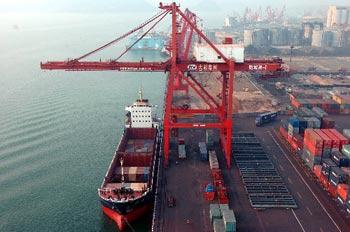China's major ports saw a rebound in their cargo handling capacity in the first quarter of the year. The surge in the important barometer of macro-economy indicates that the government's stimulus measures have taken hold.

The port of Qinghuangdao in North China is a main north-to-south transportation route for the country's coal. After the outbreak of the global financial crisis, the coal stockpile at the port reached as high as nearly 9 million tons.
But now things have changed. In March, the port moved 45 percent more coal than it did in February. And the stockpile has fallen to less than 5 million tons.
Song Bingfang, Board Chairman of Qinghuangdao Fanghua Trade Group said "The growth was mainly due to a rebound in power generation volume in Zhejiang and Jiangsu provinces. I feel that another climax of coal transportation is approaching in April and May."
Demand is also increasing for iron ore transportation. Tianjin Port, another major port in northern China, is experiencing a surge in iron ore delivery volume. Meanwhile, the port is also gearing up to send steel products to eastern and southern China.
Yu Rumin, Board Chairman of Tianjin Port (Group) Co. said "In March, the number of containers of domestic trade at our port surged 43 percent year-on-year. This is rarely seen over the past years. The increase drove up our overall container handling capacity."
Domestic trade has also raised cargo handling capacity at major ports in eastern and northeastern China. These include Qingdao Port, Yantai Port, and Dalian Port.
While in foreign trade-oriented ports like Shanghai and Ningbo ports, positive signs have also emerged. Container handling capacity of Shanghai Port declined more slowly in March, while the figures at the Ningbo Port rebounded. Experts say these figures all indicate that the government's stimulus measures have had a positive effect.
(CCTV April 14, 2009)